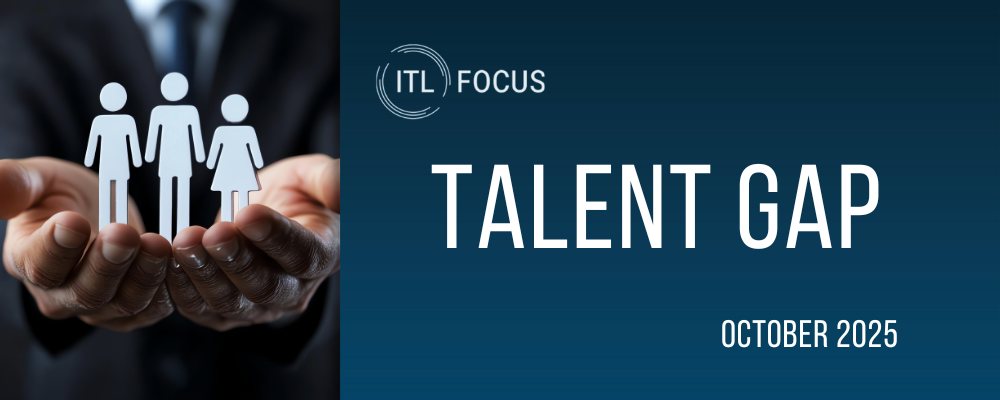“New normal” was the phrase heard around the workplace throughout much of the first year of the pandemic. It’s become the colloquial term used to describe the lifestyle changes society undertook that have become commonplace, such as remote work.
If “new normal” was the buzzword of 2020, “great resignation” seems to be reigning supreme over the past year. In July 2021, 4 million Americans quit their jobs, and there were a record-breaking 10.9 million job openings at the end of the month.
Fast forward to today, and the war for talent is still in full swing. Thanks in part to 4.4 million Americans quitting their jobs in February, employers are seeking to fill a staggering 11.3 million jobs, according to the Bureau of Labor Statistics.
What’s motivating this great resignation? The pandemic has certainly made individuals take a step back and reevaluate what’s important to them, what they want for their careers and the significant impact and financial burden on their families. A Prudential survey found that nearly 80% of employees are seeking benefits such as retirement plans, health, disability and life insurance, paid family medical leave and emergency savings programs.
In response, employers are seeking to offer a broader portfolio of offerings, including an overall benefits package that addresses the wants and needs of today’s employees. This was a key discussion in roundtables Majesco held and reflected in a report Majesco commissioned Celent to do, Next-Gen Platforms in Group and Voluntary Benefits. Carriers, in turn, need to deliver innovative product offerings quickly to enable employers to offer some of these new benefits employees are seeking. While it may be a stressful time for HR departments, there is significant room for growth for L&AH insurers in 2022 and beyond.
Growth has returned to L&AH
Despite a need to undertake digital transformation to leverage benefits of the cloud, new technologies and ecosystems to bring products and services to market more quickly, many carriers were forced to trim budgets in 2020 due to profitability challenges. In fact, from 2016 to 2020, DWP growth in the L&A space was down 1.7% compared with increases of 6.5% for accident and health and about 4% growth for both commercial and personal lines for P&C, per Celent analysis.
But those challenges appear to be in the rearview mirror. Among North American life insurance CIOs polled by Celent in its 2022 report “CIO Pressures and Priorities, 2022: Life Insurance North America,” growth was the No. 1 area of emphasis among CIOs. Nearly 80% of CIOs reported a significant focus on growth, narrowly outpacing digital acceleration, another key focus on the heels of the pandemic.
Traditional insurance products focused on life, disability and A&H are no longer sufficient for the new needs and expectations of today’s insurance buyer. Consider that, in 2021, millennials overtook Gen X and Boomers as the dominant 30- to 60-year-old insurance buyer segment in the U.S. and will be joined by members of Gen Z in 2025. These cohorts are accustomed to digital, easy-to-buy products from other industries and have different work and lifestyles that drive different needs and expectations for their insurance and benefits.
Carriers are being forced to adapt or risk being left behind. In Majesco’s 2021 Strategic Priorities Report: Despite Challenges, Leaders Widen the Gap, the Modernize and Optimize gap between Leaders and Laggards grew significantly from 9% to 33% over the past three years.
One area of strong growth focus for insurers is on wellness. Among all voluntary benefits growth in 2021 for North America, wellness outpaced all other products with 27% growth, according to Celent’s preliminary 2021 Group & Voluntary PAS ABC Report — up from 15% in 2019.
See also: Go Ahead, Let the Analysts Freak Out
Addressing the life insurance protection gap
Another growth opportunity for insurers is in the life insurance market. There is a significant protection gap for U,S, households, with 48% of consumers living without life insurance, but there’s reason for optimism as 2021 data shows strong buying signals.
Propelled by 26% fourth quarter premium growth, total life insurance new annualized premium grew 20% in 2021, representing the highest annual growth since 1983, according to LIMRA’s Fourth Quarter U.S. Retail Life Insurance Sales Survey.
As noted from the report’s release, “Our research shows that the pandemic raised consumer awareness and demand for life insurance protection. Three in 10 Americans tell us they are more likely to purchase coverage due to COVID-19,” said David Levenson, president and CEO, LIMRA, LOMA and LL Global. “This interest has translated into record sales. Nearly two-thirds of carriers reported significant positive gains, including nine of the top 10 carriers.”
With the biggest area of growth available from younger generations seeking coverage, carriers need to evaluate their distribution and underwriting models. These digital customers are expecting a frictionless, digital buying experience that is on par with their interactions in other sectors.
Modernizing the back office to create an intelligent core
While modernizing core back systems has been on the radar for carriers for some time, the pandemic shifted its priority on many carriers’ roadmap as they significantly limit digital transformation. The need to bring products to market quickly, operate on more efficient systems and enhance scalability in the cloud has forced carriers to undergo significant core system digital transformation processes.
One of the key drivers for many insurers in the process of replacing legacy systems is putting solutions in place that are better suited to integrate via APIs with third-party partners and solutions to benefit from the data and workflows and extended innovative capabilities of those platforms. By embracing next-generation intelligent core platforms, carriers can position themselves to meet the dynamic demands of today’s multi-generational employee base.
New business and underwriting systems are a leading focus area for carriers seeking to better leverage data to personalize and prioritize the products that fit with employees’ life stages and personal needs and interests.
The upheaval of today’s workforce was bound to happen eventually as insurers and employers alike adapt to the younger generation. The timeline has just been accelerated by the pandemic. But amid the chaos, L&AH insurers with next-gen intelligent core systems are poised to capitalize on the growth opportunities presented by today’s evolving employee needs.
The digital future is today, and high performance is expected of the industry.






